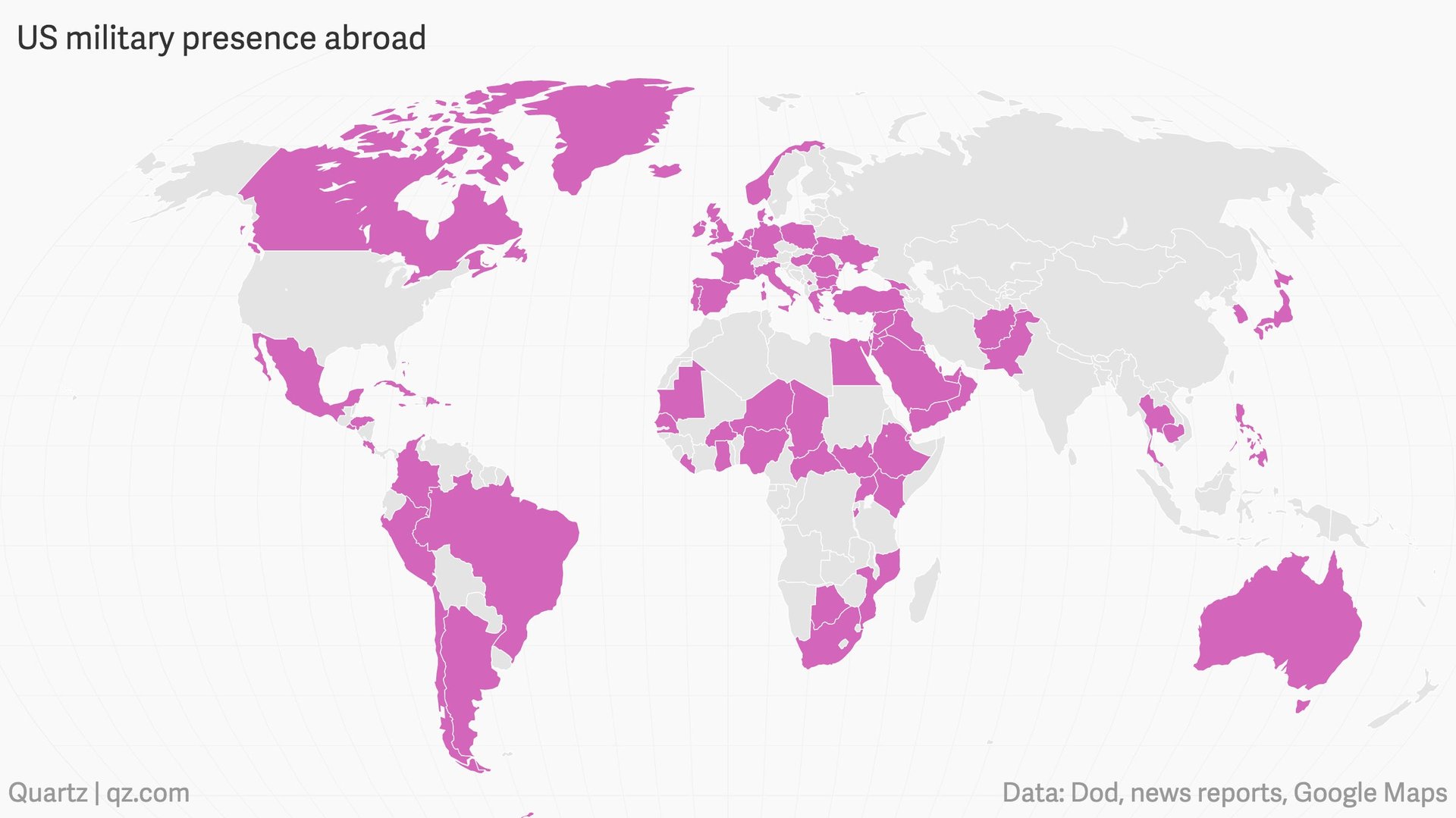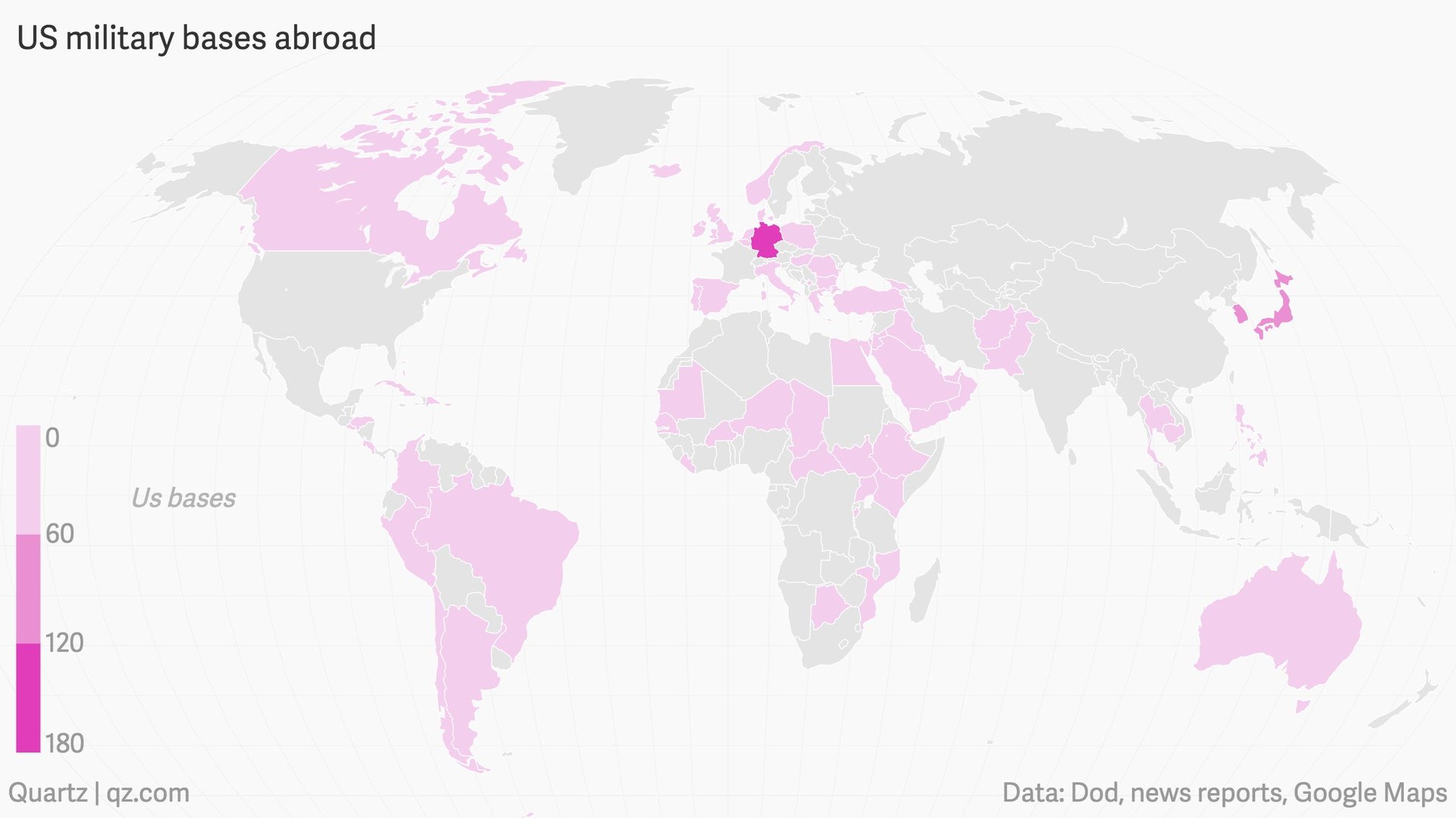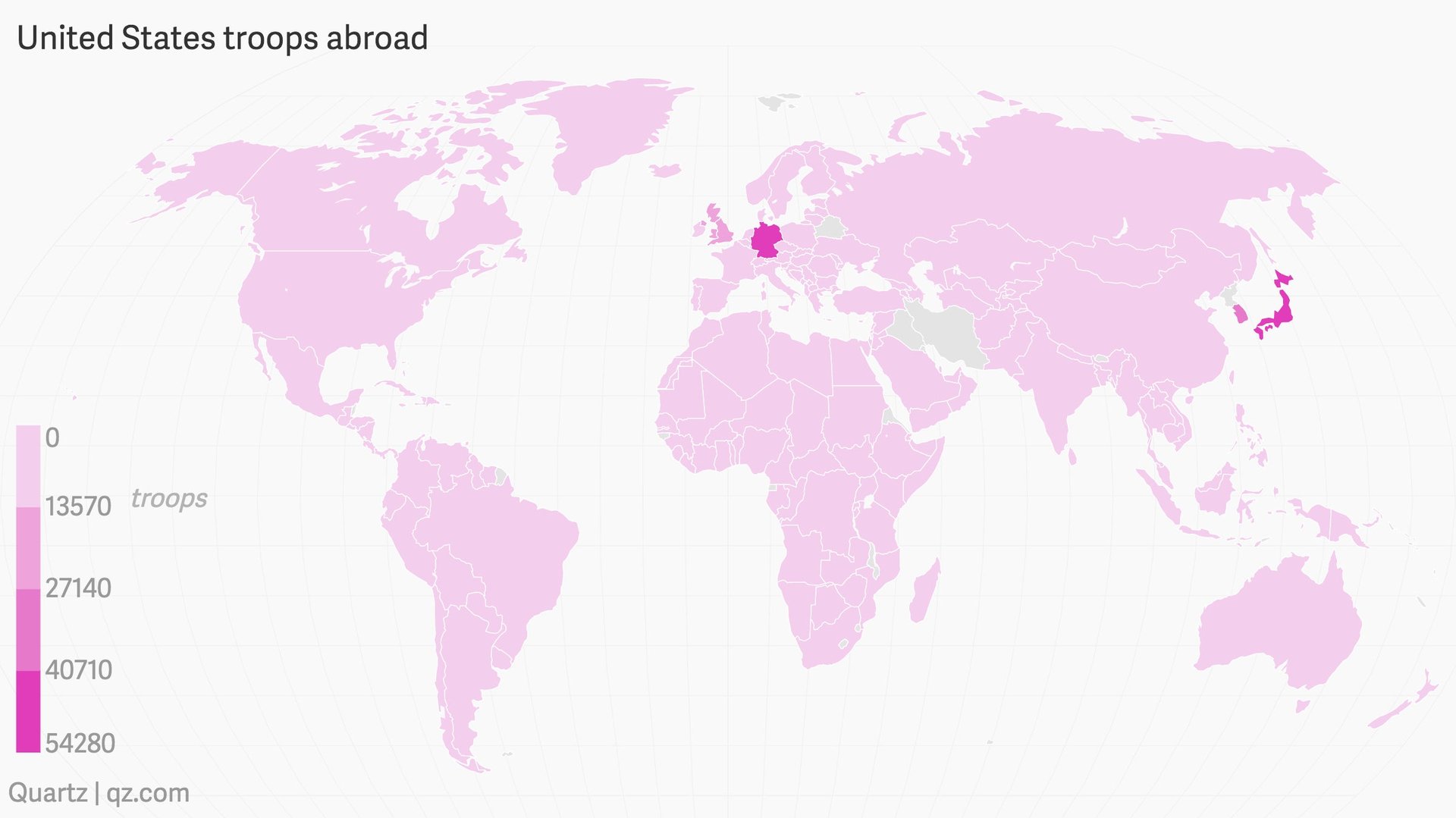These are all the countries where the US has a military presence
This item has been corrected.


This item has been corrected.
On Mar. 24, US president Barack Obama announced that all 9,800 US troops currently stationed in Afghanistan will remain until the end of 2015. This generated a fair amount of criticism: it was, after all, Obama’s promise that the last American troop would leave the country in 2014.
Those expecting the US to leave Afghanistan, however, should take a minute to consider this: the US still hasn’t left Germany. In fact, there are quite a few places the US hasn’t left, and while certainly most of them don’t pose a threat to American soldiers, they reveal a pattern about the US staying, rather than leaving.
According to official information provided by the Department of Defense (DoD) and its Defense Manpower Data Center (DMDC) there are still about 40,000 US troops, and 179 US bases in Germany, over 50,000 troops in Japan (and 109 bases), and tens of thousands of troops, with hundreds of bases, all over Europe. Over 28,000 US troops are present in 85 bases in South Korea, and have been since 1957.
Altogether, based on information contained in the DoD’s latest Base Structure Report (BSR, pdf), the US has bases in at least 74 countries and troops practically all over the world, ranging from thousands to just one in some countries (it could be a military attaché, for instance).
By comparison, France has bases in 10 countries, and the UK has bases in seven.
Calculating the extent of the US military presence abroad is not an easy task. The data released by the Department of Defense is incomplete, and inconsistencies are found within documents. Quartz has requested clarification from the Department of Defense, but hasn’t received a response.
In his forthcoming book Base Nation: How US Military Bases Abroad Harm America and the World, David Vine, associate professor of anthropology at American University details the difficulties of assessing the US military presence abroad. He writes:
according to the most recent publicized count, the U.S. military currently still occupies 686 “base sites” outside the fifty states and Washington, DC.
While 686 base sites is quite a figure in its own right, that tally strangely excludes many well-known U.S. bases, like those in Kosovo, Kuwait, and Qatar. Less surprisingly, the Pentagon’s count also excludes secret (or secretive) American bases, like those reported in Israel and Saudi Arabia. There are so many bases, the Pentagon itself doesn’t even know the true total.
That is not the only issue—even a definitive count of bases would include a wide range of facilities. “Base” itself is an umbrella term that includes locations referred to as “post,” “station,” “camp,” or “fort” by different military bodies. Vine explains:
bases come in all sizes and shapes, from massive sites in Germany and Japan to small radar facilities in Peru and Puerto Rico. […] Even military resorts and recreation areas in places like Tuscany and Seoul are bases of a kind; worldwide, the military runs more than 170 golf courses.
The map below represents US military bases abroad, according to the official BSR, and from independent research conducted by Vine (and Quartz) using verified news reports as well as cross-referencing information with Google Maps. This map does not take into account NATO bases, including a rumored base in Turkmenistan and a base in Algeria, reported by Wikileaks to be a suspected US base.

Most of the countries appear to have a small concentration of US bases (below 10). That’s compared to Germany’s 179, Puerto Rico’s 37, or Italy’s 58. The largest military footprint remains in countries that the US invaded in WWII, while its presence in areas of more recent contention, such as the Middle East, is somewhat reduced, at least in terms of bases.
It has been noted by commentators before that not all the bases are of significant size. However, given the information available it’s hard to truly gauge the size of the different installation. Vine writes:
The Pentagon says that it has just 64 “active major installations” overseas and that most of its base sites are “small installations or locations.” But it defines “small” as having a reported value of up to $915 million. In other words, small can be not so small.
The information about troops abroad, too, isn’t completely clear, which makes it difficult to know the true extent of the American military footprint. IHS Jane’s armed forces analyst Dylan Lehrke told Quartz that it’s hard to even settle on the definition of military presence—for the government, that means bases or deployed troops, although it would seem acceptable to include other forms of presence:
Surely one could say that the US has a military presence in Syria at the moment. They may not have bases and troops on the ground but we should include the warplanes in the sky. The US military arguably has more presence in Syria than it does in Germany […]. To take this idea further, it would also be rational to say the US has a military presence wherever it uses unmanned aerial vehicles to strike targets.
All the countries that have some sort of American military presence—from one military attaché to the troops involved in Iraq and Afghanistan—essentially results in highlighting pretty much the entire world (Russia included, where the DoD reports having 24 military personnel).

Taking into account a sizable troop presence, existence of bases, and whether the US is conducting drone strikes (Yemen, Syria, Pakistan) in a country results in the geographic representation of US military power abroad as below:

Correction: A previous version of the featured maps of US bases abroad and US military presence indicated that there were US bases in India.